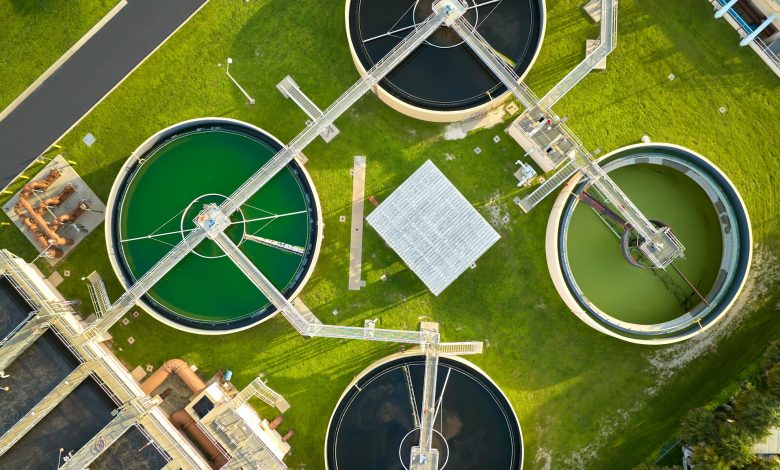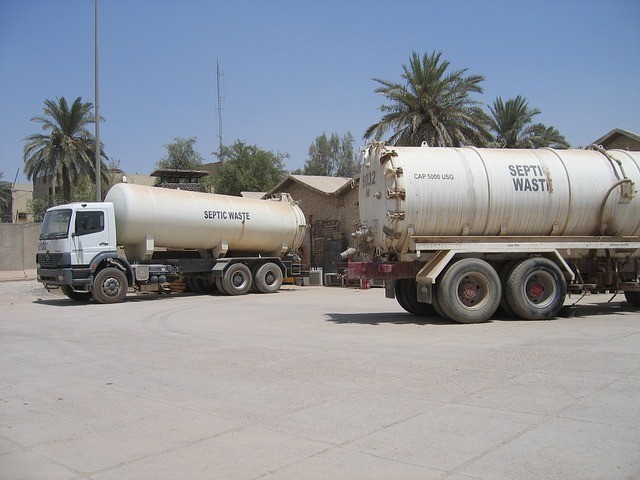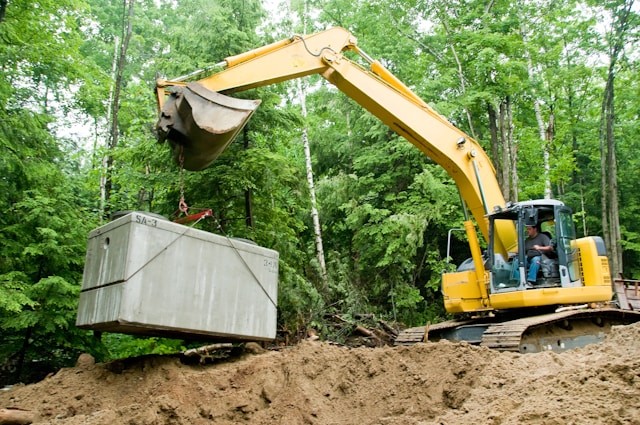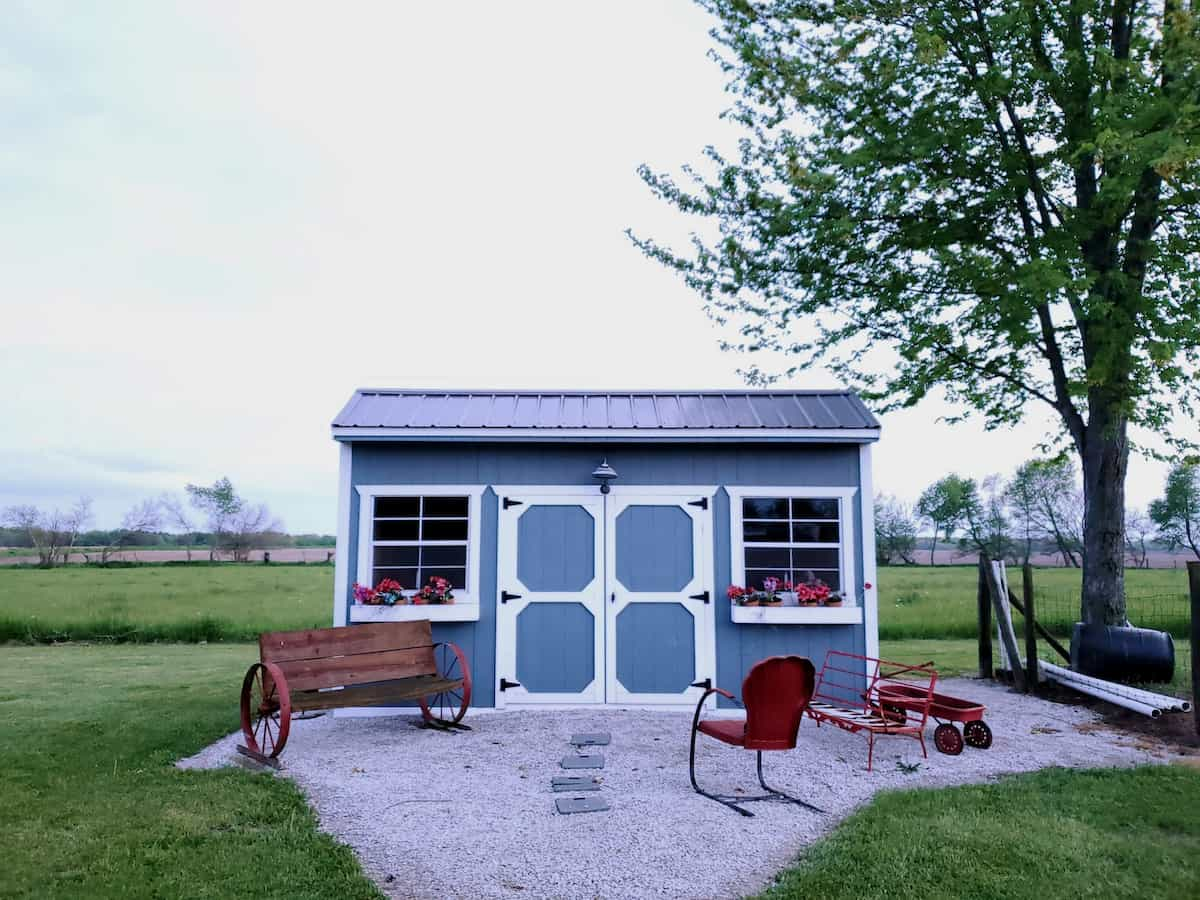How Does a Septic Tank Work?

Septic tanks are a vital part of wastewater management for homes not connected to municipal sewer systems. Understanding how a septic tank works can help homeowners maintain their systems effectively and avoid costly issues. This blog will explore the components and processes involved in septic tank operation.
So, how does a septic tank work?
What is a Septic Tank?
A septic tank is an underground, watertight container typically made of concrete, fiberglass, or polyethylene. It serves as the first stage of wastewater treatment, where solids settle and begin to break down before the effluent is released to a drainfield for further treatment.

Components of a Septic Tank
Inlet Pipe
The inlet pipe channels all household wastewater into the septic tank. This pipe connects the home’s plumbing system to the septic tank, ensuring that wastewater from toilets, sinks, showers, and appliances enters the tank for treatment.
Tank Body
The main body of the septic tank is designed to hold wastewater long enough for solids to settle to the bottom as sludge and for oils and grease to float to the top as scum. The middle layer of liquid, called effluent, is what exits the tank for further treatment.
Outlet Pipe
The outlet pipe is located on the opposite end of the tank from the inlet pipe. It allows the effluent to flow out of the tank and into the drainfield. This pipe is designed to ensure that only the middle layer of liquid leaves the tank, preventing solids and scum from entering the drainfield.
Baffles and T-shaped Outlets
Baffles and T-shaped outlets are used to direct the flow of wastewater and prevent solids from leaving the tank. These components are critical for maintaining the efficiency of the septic tank by ensuring proper separation of solids, effluent, and scum.
How Does a Septic Tank Work?
The Treatment Process
Here’s a detailed look at how a septic tank works, step by step:
-
Wastewater Enters the Tank: Household wastewater flows into the septic tank through the inlet pipe.
-
Separation of Solids and Liquids: Inside the tank, solids settle to the bottom, forming sludge, and oils and grease float to the top, creating a scum layer. The remaining liquid, called effluent, stays in the middle.
-
Bacterial Action: Anaerobic bacteria in the tank break down some of the organic matter in the sludge, reducing its volume.
-
Effluent Discharge: The effluent flows out of the tank through the outlet pipe and into the drainfield for further treatment.
Drainfield Function
The drainfield, also known as the leach field, consists of perforated pipes laid in gravel-filled trenches. As the effluent percolates through the soil, it undergoes further treatment by soil microorganisms that remove harmful bacteria, viruses, and nutrients before the water reaches the groundwater.
Maintaining a Septic Tank
Regular Pumping
Septic tanks need to be pumped regularly to remove accumulated sludge and scum. Most tanks should be pumped every 3-5 years, depending on their size and household water usage. Regular pumping prevents solids from overflowing into the drainfield and causing clogs.
Water Conservation
Conserving water helps prevent overloading the septic tank, ensuring it operates efficiently. Practices like fixing leaks, installing water-efficient fixtures, and spacing out high-water-use activities can help maintain the system’s balance.
Proper Waste Disposal
Flushing non-biodegradable items, chemicals, and excessive grease can clog the septic system and disrupt the bacterial balance needed for breaking down waste. Proper disposal of household waste is essential for maintaining the health of your septic tank.

Common Issues and Solutions
System Overload
Too much water entering the septic tank can overwhelm the system, preventing proper separation and treatment.
Solution: Conserve water by spreading out high-usage activities and fixing leaks promptly.
Clogs and Blockages
Blockages can occur in the pipes leading to the septic tank or within the tank itself, causing backups and overflow.
Solution: Regular inspections and pumping, along with mindful waste disposal, can prevent clogs and blockages.
Drainfield Problems
Problems in the drainfield, such as soil saturation or compaction, can hinder effective effluent absorption and treatment.
Solution: Ensure proper site evaluation and maintenance of the drainfield, and manage surface water to prevent saturation.
Conclusion
Understanding how a septic tank works is crucial for homeowners who rely on these systems for wastewater treatment. By familiarizing yourself with the components and processes involved, you can ensure your septic tank operates efficiently and remains in good condition. Regular maintenance, water conservation, and proper waste disposal are key to preventing issues and maintaining a healthy septic system for years to come.




